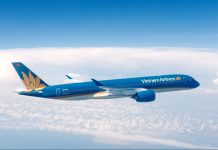At the conclusion of the 69th Assembly of Presidents, leaders of the Association of Asia Pacific Airlines (AAPA) expressed confidence in the region’s continued air transport growth through 2026, supported by resilient economies and strong passenger and cargo demand. Despite persistent geopolitical and trade tensions, AAPA members registered robust international air traffic performance. International passenger traffic for Asia Pacific carriers rose 10% in the first nine months of 2025, while air cargo demand expanded 7%, outpacing global averages.

“Asia Pacific airlines continue to demonstrate agility in managing supply chain constraints, with capacity growth keeping pace with demand,” said Subhas Menon, AAPA Director General. “However, further escalation of tariffs could exacerbate these bottlenecks.”
Supply chain recovery undermined by tariffs AAPA says in opening speech
AAPA Director General’s industry presentation
VIEWPOINT: Trump & tariffs — and you thought COVID was bad
The Assembly brought together airline leaders, manufacturers, and industry partners to address key industry priorities, including supply chain resilience, sustainable aviation fuel (SAF) deployment, and enhancing manpower resilience. “Stakeholders across the aviation ecosystem must work together to navigate the evolving challenges of the external environment. The Assembly reaffirmed the industry’s unity and determination to navigate global uncertainty, much as it did during the pandemic,” Menon added.
The Assembly of Presidents unanimously passed a number of resolutions on several key industry priorities.
- Aviation Sustainability: The Assembly affirmed a collective target of 5% SAF utilisation by 2030, called on Governments to support fuel suppliers by establishing policy and regulations to accelerate SAF production, and adopt ICAO CORSIA-eligible fuel criteria. The resolution further urged States to implement ICAO-approved SAF accounting and registry systems, and support cost-effective production pathways such as co-processing.
- Supply Chain Strengthening: The Assembly called for targeted investment incentives and regulatory harmonisation to enhance regional MRO and manufacturing capabilities. It also supported the adoption of circular economy principles, including recycling and reuse of serviceable aircraft materials.
- Aviation Safety: A resolution focused on lithium batteries was passed, calling on regulators to align practices with ICAO guidance for the safe carriage of spare lithium batteries, and to enhance data sharing and public outreach materials on the carriage and usage of lithium batteries by passengers.
- Taxes and Charges: The Assembly called on regulators to refrain from imposing taxes or charges on international air transport that are not cost-related or consistent with ICAO guidance, cautioning against measures that add an unnecessary financial burden on airlines, or which impede sustainable air transport growth.
AAPA expects international passenger traffic to continue expanding in line with long-term trends, supported by a growing services sector and rising regional connectivity. The outlook for air cargo demand remains broadly positive, but subject to uncertainties from global trade policies and elevated costs, including those from new U.S. tariffs and limited SAF availability. “AAPA airlines are optimistic,” said Menon. “Our focus in 2026 will be to advance aviation safety and sustainability across the Asia Pacific region, strengthen supply resilience in collaboration with regulators and suppliers, and promote air transport connectivity.”
Airbus: APAC will need 19,560 new planes over 20 years:
The Asia Pacific region is projected to require 19,560 new narrowbody and widebody planes over the next 20 years, majorly driven by demand from India and China, Airbus Asia Pacific President Anand Stanley told the AAPA conference. The demand, Airbus said, represents 46% of the global requirement for 42,520 new aircraft over the timeframe of 20 years. India and China are driving a major portion of the growth, Stanley said.
With rising passenger traffic, the Asia-Pacific region is expected to see an annual passenger growth of 4.4%, higher than the global average of 3.6%. India is one of the world’s fastest-growing civil aviation markets and airlines have placed huge orders as they expand their fleets to cater to the rising traffic demand. Stanley said the region is projected to require around 3,500 widebody planes over the next 20 years. This number represents 43% of global demand in the larger size aircraft categories. Asia Pacific will need around 16,100 singleaisle aircraft, Stanley said.




















